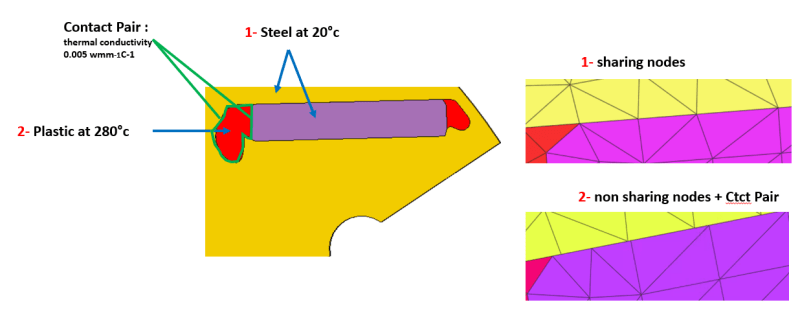Hello All;
I'm doing a thermal analysis with Abaqus:
1- 2 parts in contact at room temperature
2- heating one of them to 280°
3- plotting a curve Temperature = function (time) of the 2nd part
My questions are:
1- what is the recommended type of mesh element for this kind of analysis (2D or 3D, tria or quad ...) ?
2- is that matter if the 2 parts share the same nodes ( without using contact) or i should define a contact between them?
3- can i use one step for this analysis? Or i should have one step for the initial BC and one step for the heating temperature
4- is there an abaqus output in history field which calculate the average temperature of that surface in function of time
Thanks,
I'm doing a thermal analysis with Abaqus:
1- 2 parts in contact at room temperature
2- heating one of them to 280°
3- plotting a curve Temperature = function (time) of the 2nd part
My questions are:
1- what is the recommended type of mesh element for this kind of analysis (2D or 3D, tria or quad ...) ?
2- is that matter if the 2 parts share the same nodes ( without using contact) or i should define a contact between them?
3- can i use one step for this analysis? Or i should have one step for the initial BC and one step for the heating temperature
4- is there an abaqus output in history field which calculate the average temperature of that surface in function of time
Thanks,

